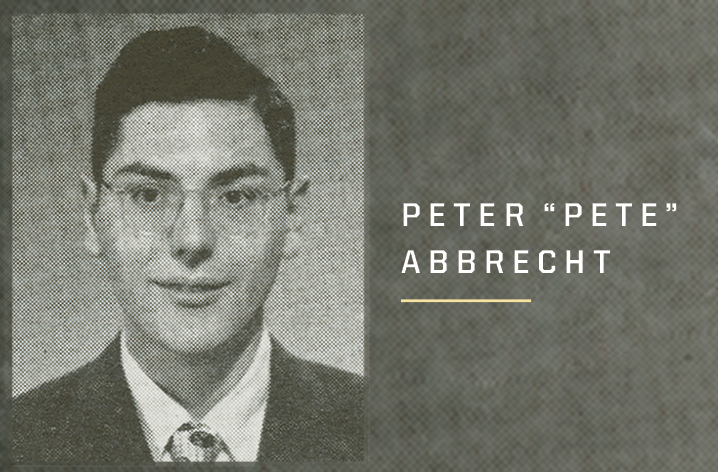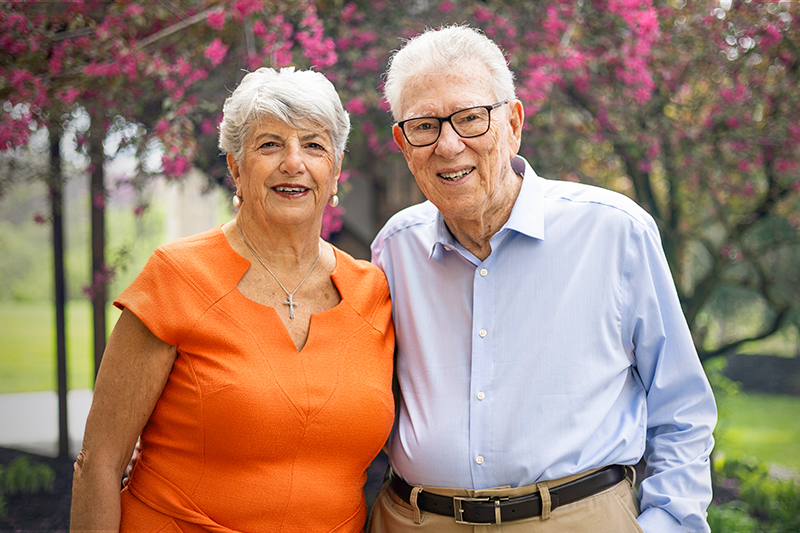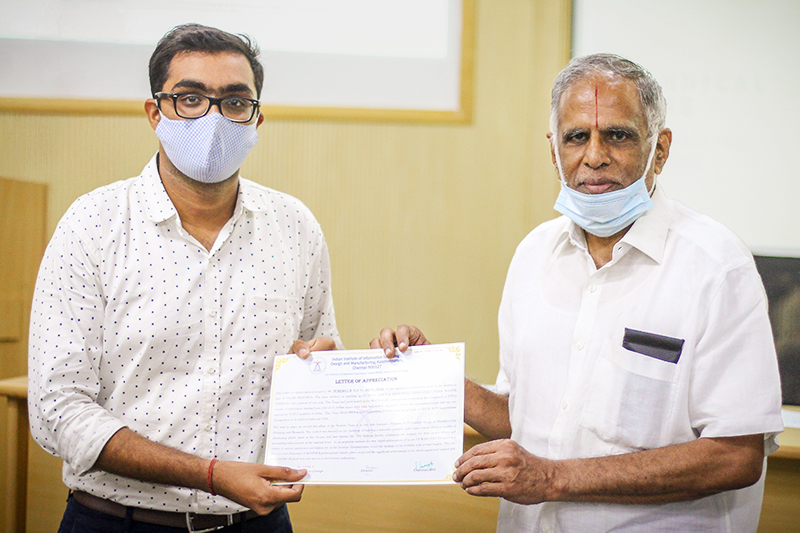A Mutually Beneficial Gift
A popular giving vehicle, the charitable remainder unitrust (CRUT) allows donors to transfer appreciated assets into an irrevocable trust.
Most often, the trustee sells the asset and invests the proceeds in order to fund a percentage distribution for a term of years, or a beneficiary’s lifetime. The donor receives a charitable tax deduction for the anticipated residuum to the charity, plus the benefit of having a qualified 501(c)(3) liquidate the asset, making 100% of the sale proceeds available to fund the CRUT.
“The CRUT works well for us since it is a way to profess our gratitude to Purdue, and otherwise my wife, Dianna, would be taking and paying taxes on yearly RMDs (required minimum distributions),” says medical doctor and expert Dr. Peter “Pete” Abbrecht (ChE’52, MA’53) about funding a testamentary CRUT with an IRA beneficiary designation.
Savvy estate planners, the Abbrechts frequently considered setting up something for their children with a charitable component. The SECURE Act of 2019 gave them the necessary nudge to find a solution for passing on an IRA to their heirs.
Prior to the SECURE Act, non-spousal IRA beneficiaries could “stretch” RMDs over the course of their lifetime. The new legislation does away with the stretch IRA, instead imposing a 10-year spend-down rule for non-spousal beneficiaries in most cases.
This new rule creates difficulties on several levels. First, having only a decade to spend down these accounts does not give the assets time to grow as they would over an heir’s lifetime. Second, leaving a significantly funded IRA to an heir could be a huge tax burden.
Consider a household with a $149,000 annual income that suddenly inherits an IRA valued at $500,000. If the heirs elected to withdraw 10% of the balance each year for the entire 10-year payout window, the $50,000 in the first year alone would increase the household income by 30%. The additional amounts would fall into a higher tax bracket than their other income while eliminating certain childcare credits and other income tax deductions they may have used in years past. The expedited payout requirements can result in a much less impactful gift to heirs than planned, and they have become less of a safety net than once considered.
Pete and Dianna turned to a vehicle they were familiar with, the CRUT. Pete structured it testamentarily, meaning it will not be fully established until he passes. He named the trust as a beneficiary of one of his IRAs and set it up so his two children will split an annual 5% distribution. The Purdue Research Foundation (PRF) will serve as the trustee, and Pete’s estate will receive an appropriate charitable tax deduction in the year the trust is officially established. Furthermore, because PRF is a charitable entity, no taxes will be incurred during the transfer, and 100% of the IRA balance will be available to fund the trust.
“It will provide a nice supplement to our kids’ retirement income,” Pete explains. “Even though they will be taxed on distributions, they will be in a lower tax bracket.” Pete points out one more benefit concerning this workaround. “It doesn’t put a large chunk of money in their hands at one time,” he says.
The testamentary CRUT was not the Abbrechts’ first experience with life income gifts. They established a CRUT in 2015 with PRF by transferring appreciated securities, making Dianna the beneficiary. The benefits of establishing the CRUT during their lifetimes include a lifelong income stream for Dianna, plus a 2015 charitable tax deduction to offset other gains during that year. Choosing appreciated securities as the CRUT funding source triggered even greater tax savings because PRF could sell the securities and bypass capital gains, making 100% of the sale proceeds available to fund the trust.
The Davidson School of Chemical Engineering will receive 90% of the residuum when both CRUTs terminate, while PRF will receive the remaining 10%. Unlike a bank or a trust company, PRF does not assess an annual administrative or trustee fee. Instead, the 10% to PRF is intended to cover administrative expenses incurred during the trust’s lifetime, and once fees are covered, to provide additional support to Purdue.
Pete’s generosity with the University and PRF is remarkable, considering he attended Purdue only after his original college plans fell through.
Pete initially applied to the University of Michigan for his undergraduate work; it was close to home, provided in-state tuition, and offered a local alumni scholarship for which he was the perfect candidate. When the scholarship didn’t materialize, his yearbook advisor suggested that Pete—the yearbook editor—apply to Purdue. “I very promptly received an offer of a scholarship, which I accepted, even though I didn’t know much about the school, and entered Purdue in September 1948, along with 14,000 other students, many being veterans on the GI Bill,” Pete says.
Purdue became the springboard for his success. After graduation, he accepted a graduate fellowship at U of M and completed his PhD in chemical engineering. Then, in the spring of 1958, his brother, a first-year medical student, shared some diagrams of the kidney countercurrent multiplying system whose operation strongly resembled countercurrent heat exchangers with which Pete was familiar. “The treatments in the physiology texts were totally descriptive, and I thought a lot more insight into their operation could be obtained from engineering-type analysis,” says Pete, who decided to attend medical school to gain the biological knowledge to apply the engineering analysis.
Medical school led to an emphasis in physiology and unique opportunities within the new field of biomedical engineering. Pete went on to author higher-education curriculums and serve at high levels within institutions like U of M, the National Institutes of Health, and the Uniformed Services University of the Health Services, where he was professor of medicine and chairman of the Department of Physiology for 20 years.
“I have a lot of gratitude for the help that I received at Purdue and hope to pay it forward in various ways,” Pete states. We feel the gratitude should flow back to the Abbrechts.


